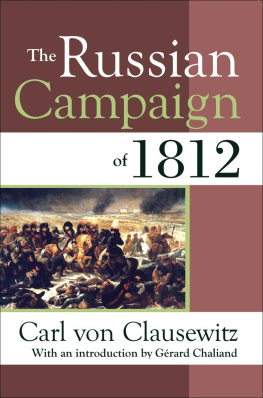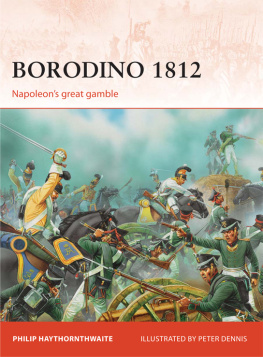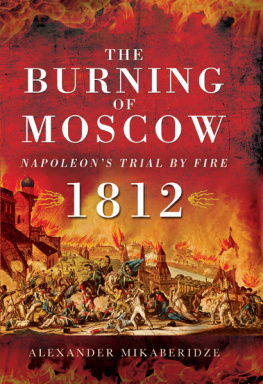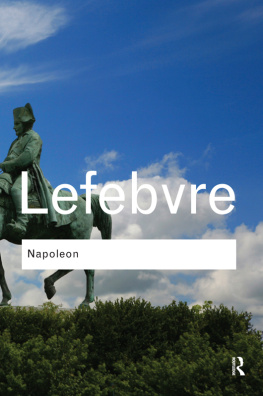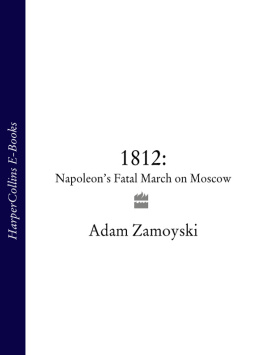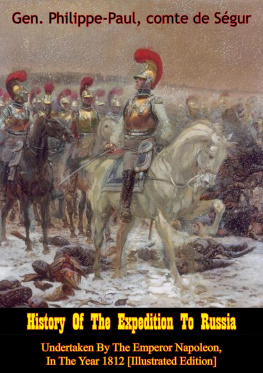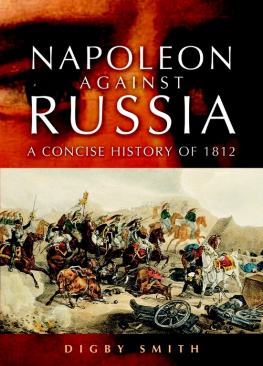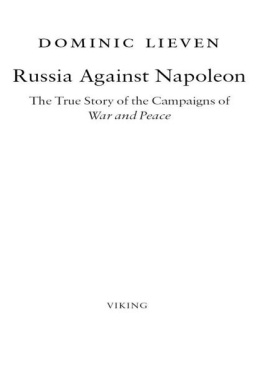GAINSBOROUGH. By Walter Armstrong , Director of the National Gallery, Ireland. With 62 Photogravures and 10 Lithographs in Colour. 5 5s. net.
LEONARDO DA VINCI. From the French of Eugne Muntz . In 2 vols., with 20 Photogravures, 26 Coloured Plates, and about 200 Text Illustrations. 2 2s. net.
MEISSONIER. By Vallery C. O. Greard . From the French by Lady Mary Loyd and Florence Simmonds . With 38 Full-page Plates, and 250 Text Illustrations. 1 16s. net.
CORREGGIO. By Corrado Ricci . Translated by Florence Simmonds . With 16 Photogravures, 21 Full-page Plates in Colour, and 160 Illustrations in Text. 2 2s. net.
REMBRANDT. By Emile Michel . Edited by Frederick Wedmore . With 76 Full-page Plates and 250 Text Illustrations. 2 2s. net.
NEW LETTERS OF NAPOLEON I. Omitted from the Edition published under the auspices of Napoleon III. Translated from the French by Lady Mary Loyd . 15s. net.
NAPOLEON AND THE FAIR SEX. From the French of Frdric Masson . With a Portrait. 6s.
LONDON: WILLIAM HEINEMANN.
21 Bedford Street, W.C.
Authors
INTRODUCTION
The following pages are not offered to the reader as a history of the invasion of Russia by Napoleon. They are but the statement of the basis of observation on which M. Verestchagin has founded his great series of pictures illustrative of the campaign. These pictures are now to be exhibited in this country, and the painter has naturally desired to show us from what point of view he has approached the study of his subjectone of the greatest subjects in the whole range of historyespecially for a Russian artist. The point of view isinevitably in his casethat of the Realist; and this consideration gives unity to the conception of his whole career and endeavour. He has ever painted war as it is, and therefore in its horrors, as one of its effects, though not necessarily as an effect sought in and for itself. He has tried to be true in all his representations of the battle-field. His work may thus be said to constitute a powerful plea in support of the Tsars Rescript to the Nations in favour of peace. My meaning will be best illustrated by a short sketch of M. Verestchagin and his work, as painter, as soldier, and as traveller.
He was born in the province of Novgorod, in 1842, of a well-to-do family of landowners. The son wished to be an artist; the father wished to make him an officer of marines. As the shortest way out of the difficulty, he became both. He passed his work-hours at the naval school, and his play-hours at a school of design, working at each so well that he left the naval school as first scholar, and eventually won a silver medal at the Academy of Fine Arts. He entered the service, but only for a short time, and he was still three years under twenty when he quitted it to devote himself wholly to art.
He was a hard-working student, though he always showed a strong disposition to insist on working in his own way. When Grme sent him to the antique, he was half the time slipping away to nature. He played truant from the Athenian marbles to flesh and blood. In the meantime he was true to the instinctas yet you could hardly call it a principleof wandering from the beaten track in search of subjects. Every vacation was passed, not at Asnires or Barbizon , but in the far east of Europe, or even in Persia, among those ragged races not yet set down in artistic black and white. He had been on the borders of a quite fresh field of observation in these journeys; and he was soon to enter it for a full harvest of new impressions. It was in 1867; Russia was sending an army into Central Asia, to punish the marauding Turkomans for the fiftieth time, and General Kauffman, who commanded it, invited the painter to accompany him as an art volunteer. He was not to fight, but simply to look on. It was the very thing; Verestchagin at once took service on these terms with the expedition, and in faithfully following its fortunes, with many an artistic reconnaissance on his own account, he saw Asia to its core.
He returned from a second Asiatic journey to settle at Munich for three years; and here he built his first open-air studio. If you are to paint out-door scenes, he says, your models must sit in the open; and so he fashioned a movable room on wheels, running on a circular tramway, and open to sun and air on the side nearest the centre of the circle, where the model stood. The artist, in fact, worked in a huge box with one side out, while the thing he saw was in the full glare of day; and by means of a simple mechanical contrivance he made his room follow the shifting light.
After a long rest at Munich, he was impatient for action once more, and in 1873 he set off for British India.
Verestchagin filled one entire exhibition with his Indian studies. They form a definite part of his collection, a section of his life-work. Amazing studies they are. The end of his sojourn coincided with the visit of the Prince of Wales, and he saw India both at its best and at its worst. In one immense canvas he has represented the royal entry into Jeypore, the Prince and his native entertainer on a richly-caparisoned elephant, and a long line of lesser magnates similarly mounted in the rear. A scene of prayer in a mosque is noble in feeling, and it exhibits an amazing mastery of technique. The Temple of Indra, the Caves of Elloraall the great show-placesare there, with their furniture of priests, deities, monsters, and men-at-arms. He made a prodigious journey, from St. Petersburg by Constantinople to Egypt, Hindostan, the Himalayas, and Thibet.
On his return he saw a great national subject at lastthe Russo-Turkish War. He followed the armies and saw it all, still as a civilian in name, but as a soldier in fact. He could not keep out of it, both from patriotism and from artistic conscientiousness. On one occasion his desire to study the effect of a gun-boat in the air nearly cost him his life. When the Russians were preparing to cross the Danube opposite Rustchuk, their engineers found it almost impossible to carry on their surveys for a bridge, owing to the proximity of the Turkish gun-boats. Some men were accordingly sent out to lay fixed torpedoes across the river to prevent the approach of the gun-boats. But they themselves required protection while engaged in the service, and a few torpedo-launches were accordingly ordered to patrol the river for that purpose. They were not to wait to be attacked, but to boldly assume the offensive, and sink or drive off the big gun-boats. It was a most dangerous duty, and when Verestchagin asked permission to serve in one of the launches the officer in command tried to deter him. Russia has many hundreds of officers like me, he said, but not two painters like you. Verestchagin, however, was allowed to have his way. The launch he chose was very swift; it went almost at the speed of a train. It soon came in sight of one of the gun-boats, to the great terror of the Turkish crew. They could be seen running about the deck shouting and shaking their fists at one another. The gun-boat turned tail at once, but the little torpedo-launch gained on it every moment. By this time the whole Turkish force had taken the alarm, and a fire was concentrated on the little launch both from the gun-boat and the banks of the river, under which it was evident she could not live. She pushed on, however, shoved the torpedo under the bows of the Turk, andit hung fire. It touched her fairly, but the wire connecting with the fuse had been cut in half by shot. Having done this, or rather having failed to do it, the launch was carried away by the tide, and just as she got clear of the vessel the Turks renewed their awful fire from ship and shore. Verestchagin suddenly felt a sickening sensation, as if he had been roughly pushed, and putting his hand to the place found a wound that would admit his three fingers. At this moment the crew of the Russian launch saw another Turkish monitor coming towards them, and firing as she came, so that they stood a good chance of being caught between these two monstersas they might fairly be called in relation to the size of the launch. However, the launch turned and ran, closely pursued by the nearest gun-boat, which she had amiably tried to destroy. The pursuer was fast gaining on them in their crippled condition, when, at a turn in the river, they saw a little creek. They made for it and were saved. The gun-boat could not follow for fear of going aground.



